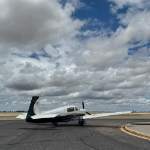Should I replace my switches?
-
Members Online
- Lax291
- jetdriven
- aviatoreb
- Patrick Horan
- dc0341
- Guy123
- hammdo
- pkellercfii
- Ragsf15e
- Brandt
- DonMuncy
- Kelpro999
- Flyler
- Scott Ashton
- MikeOH
- Adam Belle
- dkkim73
- Denis Mexted
- Mikey30V
- M20F
- patriot3300
- Rmfriday
- jamesyql
- KurtWhite
- N201MKTurbo
- Bartman
- Ronnie Pool
- takair
- bigmo
- LANCECASPER
- AH-1 Cobra Pilot
- hobbit64
- mmcdaniel33
- Michael Saathoff
- Jamesp
- paulsmeds
- N.Nelson
- Skyland
- hoot777
- affricate
- crustymuffin
- Chaseford10
- KLRDMD
- Smiles201
- FlyingScot
- TCC
- Brandon t
- hubcap
- Grant_Waite


Recommended Posts
Join the conversation
You can post now and register later. If you have an account, sign in now to post with your account.